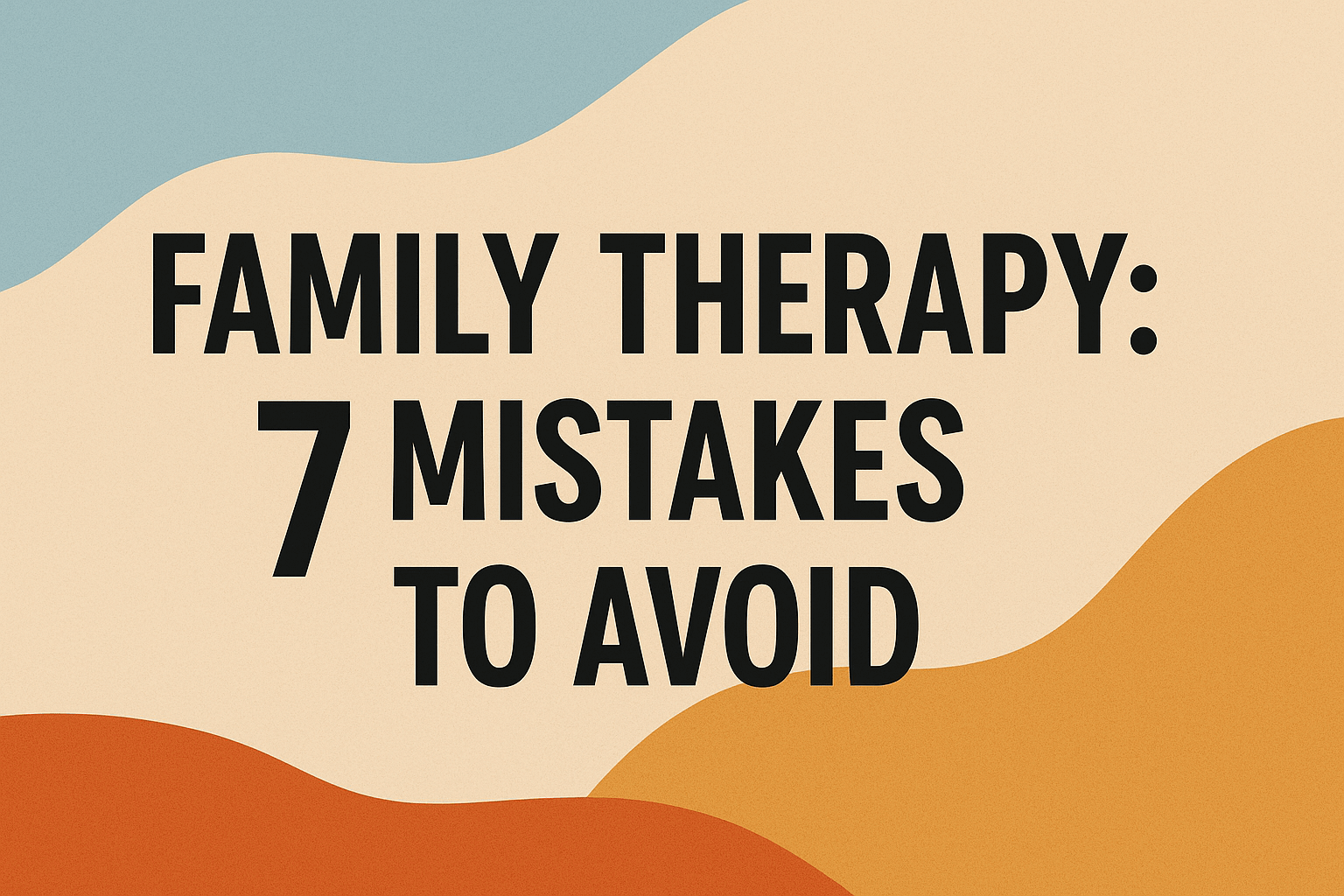Family therapy offers a structured space where relatives can confront conflicts, heal wounds, and build stronger bonds. Unlike individual counseling, it acknowledges that personal struggles often echo through the family system—and that solutions emerge when everyone works together. However, even with the best intentions, many families stumble into common missteps that stall progress or exacerbate tensions. By recognizing and steering clear of these pitfalls, you’ll maximize the benefits of therapy and set your family on a healthier, more connected path.
Understanding the Core Benefits of Family Therapy
Before diving into errors to avoid, it’s important to appreciate what makes family therapy unique. At its heart, this approach views each member’s behavior as interconnected, shaping and reshaping the household dynamic over time. A skilled therapist guides you through exercises that increase empathy, improve communication, and establish clear roles and boundaries. Whether you’re facing chronic disagreements, navigating blended-family challenges, or coping with a major life transition, family therapy can help you:
- Map relational patterns: Identify recurring conflicts and unspoken rules.
- Strengthen emotional expression: Learn to voice concerns without blame.
- Rebalance power dynamics: Ensure every member feels heard and respected.
With these tools, families often report greater harmony and resilience long after formal sessions conclude.
Mistake 1: Entering Therapy Without Shared Goals
Many families begin therapy hoping for “general improvement” but fail to articulate clear objectives. This vagueness leads to unfocused sessions, where members talk past each other and the therapist struggles to guide interventions. To avoid this, gather before your first session and agree on two or three specific goals—for example, reducing weekday mealtime arguments or improving co-parenting coordination. These shared aims become your North Star, keeping everyone aligned and enabling your therapist to select targeted exercises.
Mistake 2: Silencing Individual Voices
In a room full of voices, the loudest often dominate. Introverted teens, quieter spouses, or even elder relatives may retreat into silence, feeling their perspectives are less valuable. Yet each person’s feelings contribute vital information. Encourage equitable participation by using structured formats—such as timed speaking rounds or “talking tokens”—so that everyone has uninterrupted space to share. When each voice resonates, the family gains a fuller view of the challenges and discovers more inclusive solutions.
Mistake 3: Ignoring Cultural and Contextual Influences
Families do not exist in a vacuum. Cultural norms, socioeconomic pressures, and historical traumas shape interactions and expectations. Therapy that overlooks these factors risks prescribing one-size-fits-all strategies that simply don’t fit your reality. Acknowledging, for instance, the role of multigenerational living in some cultures or the stigma around mental health in others allows tailored interventions that respect your background. Seek a therapist experienced in your family’s cultural context, and be prepared to discuss how external influences impact your internal dynamics.
Mistake 4: Overemphasizing Problem Talk Without Skill Building
Venting frustrations can provide short-term relief, but mired in negativity it saps forward momentum. Families who dwell exclusively on grievances often leave sessions feeling heard but not healed. Balance problem identification with concrete skill-building: practice active listening, role-play de-escalation techniques, and rehearse “I” statements that express needs without blame. By alternating between exploration and application, you transform complaints into opportunities for growth.
Mistake 5: Skipping Between-Session Assignments
Therapy is not confined to the room. Real change takes place in the spaces between sessions—at the dinner table, in car rides, and during homework help. Yet many families neglect assigned exercises, expecting simply “talking” to suffice. If your therapist recommends a weekly family check-in or a journaling practice, treat these as non-negotiable appointments. Schedule them on your shared calendar, hold each other accountable, and report back on successes and obstacles at your next session.
Mistake 6: Overlooking Power Imbalances
Unexamined hierarchies—elders who override younger voices, one parent who makes unilateral decisions, or siblings jockeying for attention—fuel resentment. Unless therapy explicitly addresses these imbalances, old patterns persist. Use tools like family sculptures (arranging chairs to reflect authority) or genograms (mapping relationships across generations) to visualize power dynamics. Then work with your therapist to redistribute authority, perhaps by rotating decision-making roles or establishing democratic processes for family agreements.
Mistake 7: Treating Therapy as a Finite Fix
Some families view therapy as a short-term project: attend a handful of sessions, then return to “normal.” Yet realignment of deep-seated patterns often requires ongoing maintenance. Just as physical fitness demands regular workouts, family health benefits from periodic check-ins. Even after reaching major milestones—such as restored trust after divorce or smoother transitions after a child’s diagnosis—consider scheduling quarterly “booster” sessions. These tune-ups reinforce progress and catch emerging issues before they escalate.
Conclusion
Family therapy can catalyze profound change, fostering empathy, reducing conflict, and weaving stronger bonds. By avoiding these seven mistakes—entering without clear goals, silencing voices, ignoring cultural influences, neglecting skill-building, skipping homework, overlooking power dynamics, and treating therapy as a one-off fix—you’ll harness the full potential of this collaborative approach. Remember that therapy is a journey requiring intentional effort, both inside and outside the session. With mindful preparation and ongoing commitment, your family can not only resolve current challenges but also build a resilient foundation for years to come.

Chase Ortiz is part of the team at PaigeSimple, where he takes care of all the advertising requests. With a sharp eye for detail, Chase makes sure every advertising opportunity is handled smoothly, helping the site grow and reach more people. His ability to manage these tasks efficiently makes him an important part of the team.

